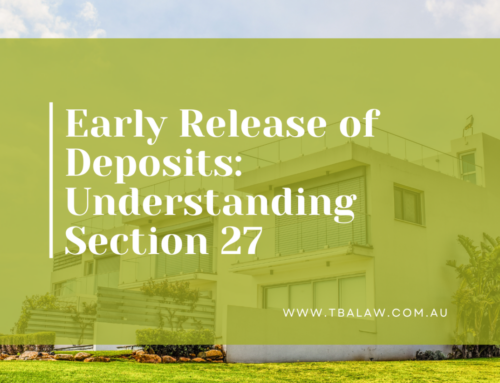New Requirements for Vendor Statements
Yet another amendment to section 32 of the Sale of Land Act has been introduced and is due to commence on 1 October 2014. This section requires vendors to provide a vendor statement to prospective purchasers before they sign a contract.
For solicitors, it is a total restructure of the section, and provides some clarity. For vendors of real estate, it confirms that the “buyer beware” principle is still the key.
Vendors needs to provide the following information in the vendor statement:
- a copy of the title and the plan
- details of any mortgage that is not to be discharged (very rare)
- owner-builder warranty insurance and an owner-builder condition report (the second can actually be included in the contract instead of the vendor’s statement)
- easements, covenants and other restrictions
- planning information, including bushfire prone areas, and the name of any planning overlay
- notices
- building permits issued within the last 7 years (this does not require disclosure of permits that have not been issued whether a permit was required or note)
- owners corporation particulars (but if it inactive, now the vendor’s statement can just say that it is inactive)
- services that are not connect, rather than services that are connected.
Of the above, the only extra requirement from those that currently exist is to detail the planning overlay. Everything else is consistent, and the owners corporation requirements have been eased.
These changes and the clarity provided by the restructure of the legislation confirms that the obligations on a vendor are not to tell everything there is to know about the property. The obligation to make proper searches still rests with the purchaser, and the purchaser will bear most of the responsibility for their decision to purchase the property.

For a purchaser to get out of a contract, the vendor has to have provided false or inadequate information. The purchaser has to prove that the vendor acted unreasonably, and that the purchaser has suffered detriment. This would be a difficult task.
But don’t forget that purchasers can still rely on misleading or deceptive conduct during the advertising of the property, and this has nothing to do with the contents of the vendor’s statement.
Finally, the new section 32 introduces a due diligence checklist of a purchaser. The due diligence checklist should be provided to (or be available to) a purchaser as soon as a property goes on the market, but failure to do so will not entitle the purchaser to get out of the contract, since the checklist will be publicly available. Agents should make sure the checklist is in their office and available on their website. Vendors selling their house directly should make sure the checklist is in the vendor’s statement.




